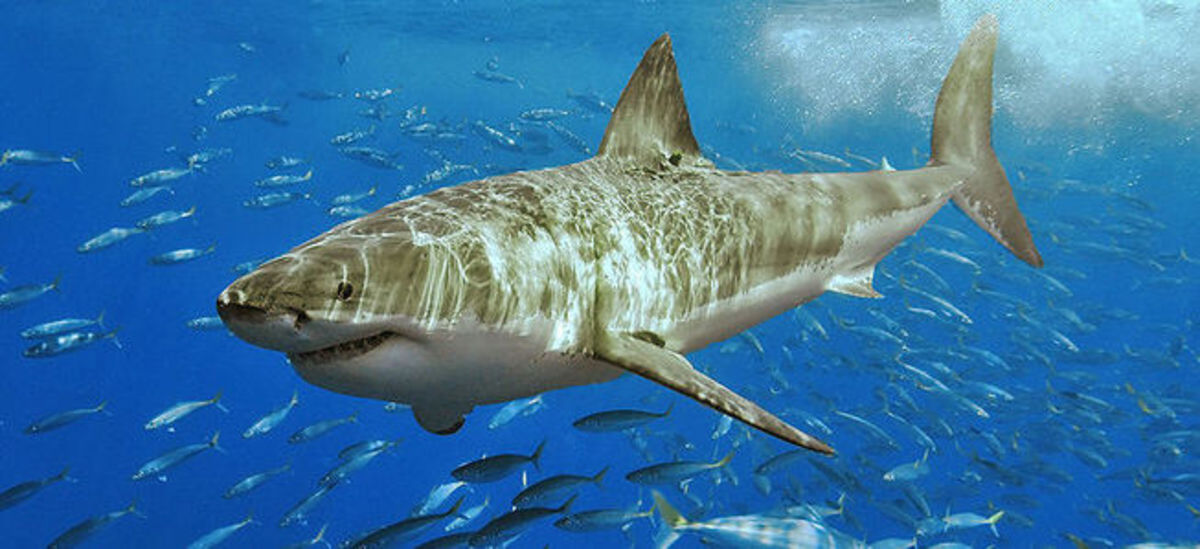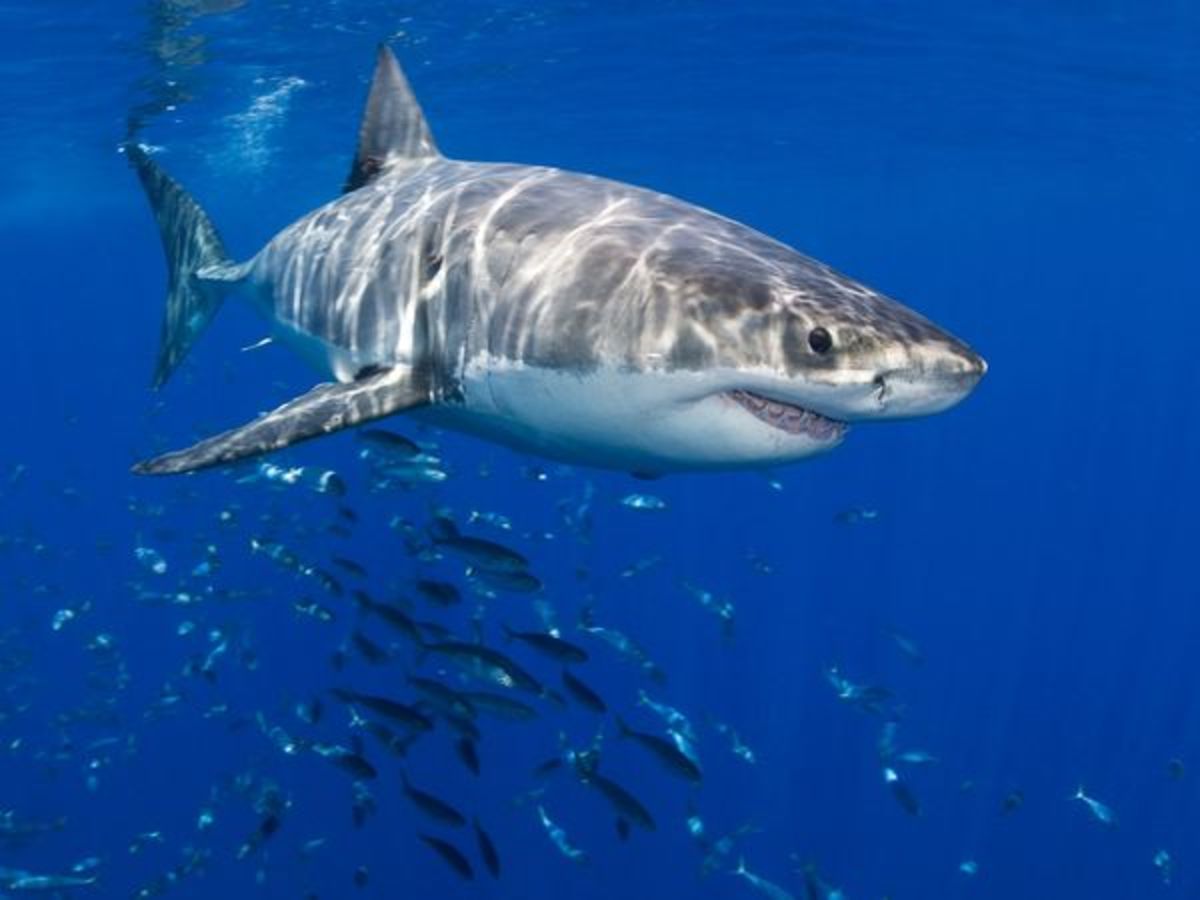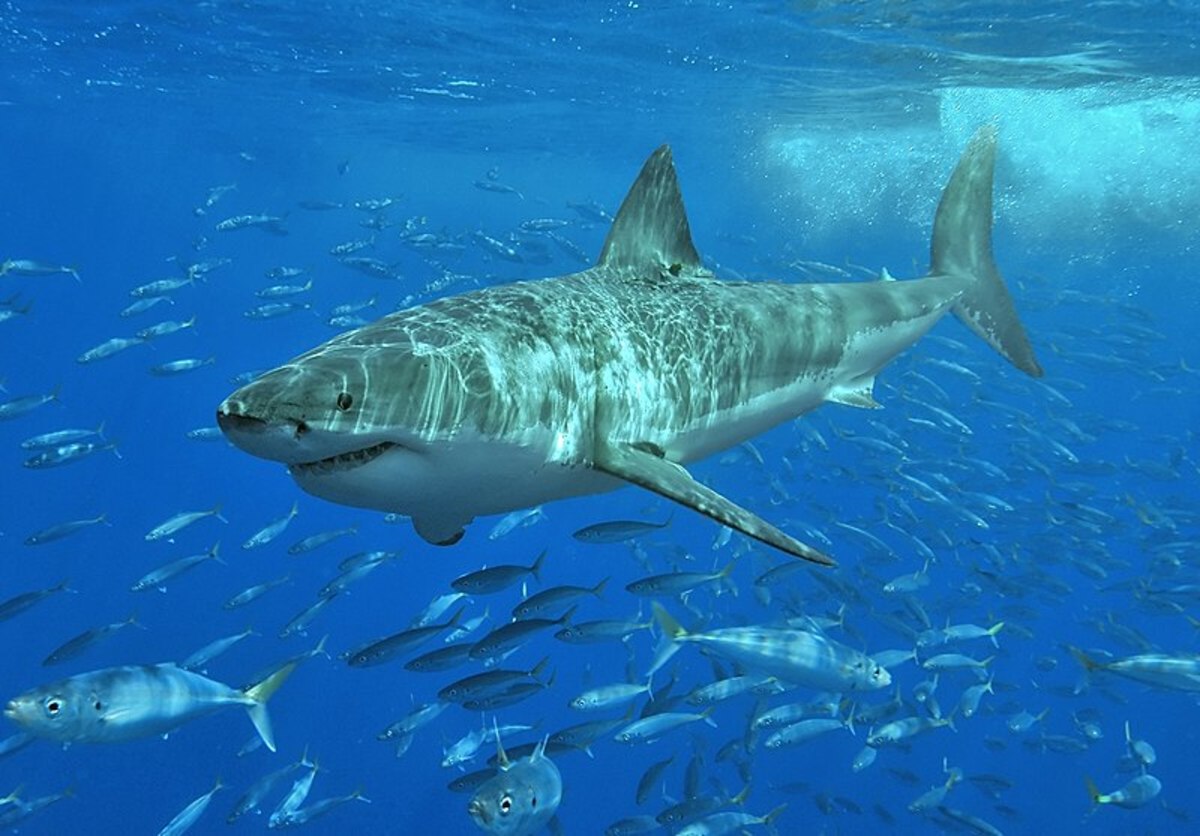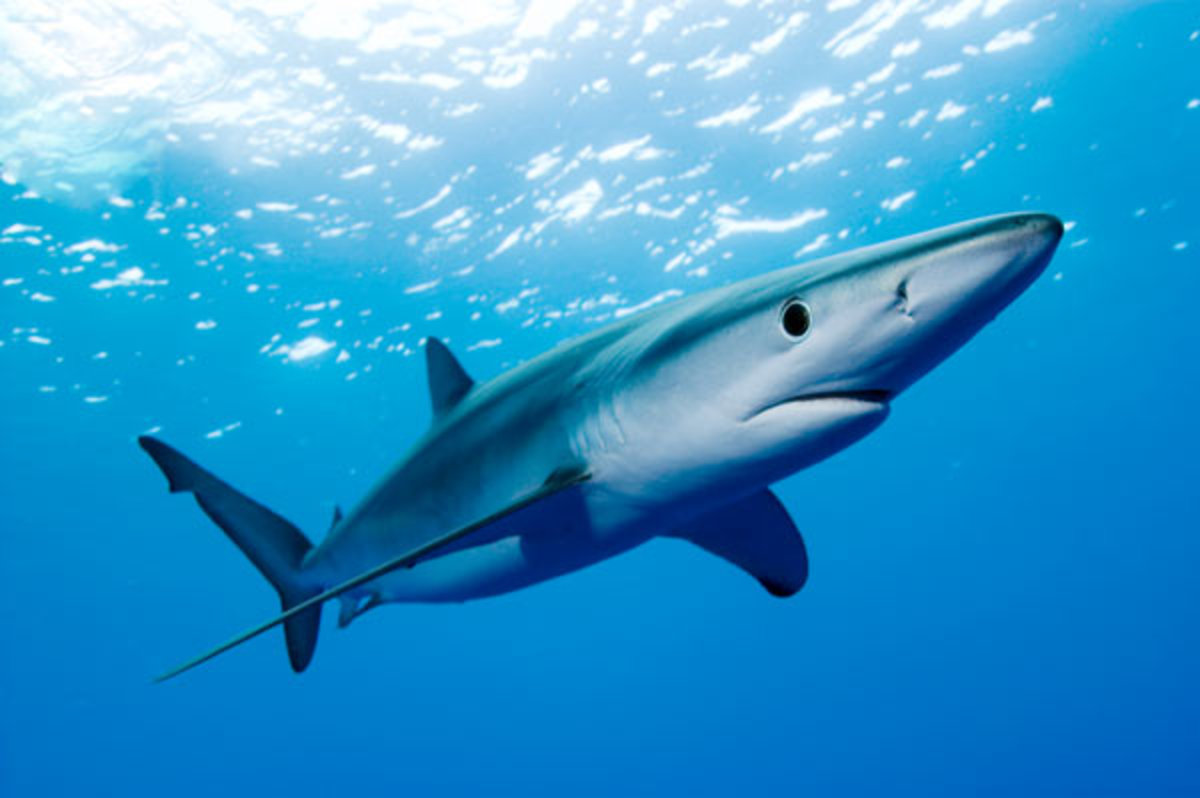- HubPages»
- Education and Science»
- Life Sciences»
- Marine Biology»
- Marine Life
Carcharodon Carcharies...That's "Jaws" to You!





The Great White Shark. Just a Curious Old Chap!
Or meeting a benign one might just be a matter of luck!
Way back in 1975, one of the best known and scariest movies ever made was “Jaws.” Many people watching this bloody block-buster never went into the sea again. It featured, of course, a rogue Great White Shark; its writer of the book of the same name, Peter Benchley, along with director, Spielberg, attributed human cunning and desire for revenge to the movie-monster, as well as showcasing the real strength of these creatures. The film, along with the others to follow, did the great white - and sharks in general - a criminal and slanderous disservice.
From all the studies made about great white sharks, along with other occasional man-eaters since the movie, it has been seen that sharks - and especially great whites - actually dislike intensely the taste of human flesh. As much as any other reason this is probably because we have never been natural prey to them and they have never become accustomed to our taste and shape. Also, man’s flesh may well have a polluted taste due to alcohol consumption, smoking or just eating unwholesome foods. But for whatever the reason, great whites and other large sharks rarely attack and devour us: more often, we are subject to the “taste test,” just a nibble to see if we are worth further interest as dinner. Unfortunately, a nibble from a great white is like a full-out attack from several Rottweilers, and can have the victim loosing limbs and dying from loss of blood before he can be rushed to the emergency ward.
It’s a good job the above is the case; if great whites and other large, carnivorous sharks really saw us as prey, we would never be able to swim again in un-netted beaches. This is because they pursue their favourite prey, seals, onto dry land, they think nothing of driving into water less than 3 feet deep, precisely the zone where most people like to play around.
This huge carnivore is found in temperate waters all round the globe, including the coastal waters of North America, Australia, and New Zealand, (where it is protected…pity they don‘t extend their beneficence to the whales they kill), as well as parts of the Caribbean and Mediterranean seas, (yes, folks, there’s some off Benidorm!), and especially in the seas around South Africa, round Amity, er, Dyer Island, the area where many people come to visit them. Did you hear that famous dirge then, at the mention of Amity, the island in Jaws, “Dum dum dumdum!”
Despite their wide distribution, there have only been 60 or so fatal attacks on man by great whites in the last 100 years, and less than 300 attacks in total. Even including all species known to have attacked man, there are less than one hundred attacks per year, with about 15 of these proving fatal. There are doubtless other attacks where the victim has been chopped-up and swallowed, perhaps by several sharks, and he or she has merely been reported as missing. This especially applies to wartime shipwrecks where thousands have not been accounted for. It would be naïve to believe none of these were eaten by sharks and, passively, by other sea creatures.
Reports in the Guinness Book of World Records show the largest great whites ever caught as being 36 and 37 feet in length. Many experts suspect some creative use with the tape measure and think it is extremely unlikely whites of more than 25 feet exist. Other popular theories tying great whites to the giant prehistoric shark, the Megaladon, are also disputed. The great whites are labelled as Mackerel Sharks - the Lamnidae - and also known as White Pointer, White Shark, “White Death,” (a hang-over from Jaws) as well as Great White, the commonest sobriquet.
There is no doubt this huge predator is supremely equipped to be the top fish on the food chain. (Some say Orcas should be in this spot, but the two are rarely seen in antagonistic roles…the great white has the superior bite and slashing teeth perhaps, but Orcas are far stronger swimmers: being mammals, they have a spine and can out-manoeuvre the more primitive fish and have actually been photographed ramming large sharks and whales).
The great white has other functions to help it detect prey: it is no doubt well aware of all the human swimmers and boats in its area. It possesses, in common with all sharks, an “Ampuilea of Lorenzini,” which can detect as little as one half of one billionth of a volt of electrical energy discharged by any other body, such as seal, sea lions, large fish and human swimmers. The reason this shark is happy in most water temperatures and depths is that it can control to a great extent the temperature of its own body, in particular its brain. It does this by employing the “Rete Mirabile,” Latin for “Wonderful Net,” a complex structure of arteries and veins running down each side of the shark and can change the shark’s body temperature from near freezing to 14 degrees C., (25F). Its cavernous jaws house arounf 3000 teeth set in about 6 to 8 rows. As the razor-edged, triangular, serrated teeth in the front rows fall out, get broken or worn, they are replaced from those in the back rows. Along with the shark’s ability to go weeks between meals, and its capacity to swim at approaching 50 kph, this all adds up to a creature that enjoys its supremacy in the oceans as the top predator.
People investigating the “white death,” have found the stories of its ferocity towards man greatly exaggerated if not plain lies. Instead, they say the creature seems to be calm and curious, enjoying a peaceful encounter with man to the extent of liking its tummy tickled, and its nose held while it opens its huge maw in pleasure. They say it is extremely shy at times and nervous of anything strange in its environment. On the other hand, there is some evidence of it biting huge chunks out of surfboards and even boats. In the few occasions where it has mounted a definite attack on a swimmer, the results have never been in doubt and several swimmers have been bitten completely in half. These attacks are so few, however, the exception proves the rule that the great white shark is less a danger to man than the domestic dog and certainly less of a threat than some other sharks, such as the Bull and Tiger Sharks and, indeed, the salt-water crocodile which seems to regard all flesh as being tasty!
It might be worth stating what seems to be obvious, that sharks, like apes, man - and probably most other complex life-forms - are not one-tone and fixed as regards what makes them tick, but vary from one creature to another. One shark might be gentle to an extent, whereas another might be a marine psychopath, slashing at anything in its way. Or it might just be having a bad day; suffering from shark PMS, or just plain hungry. It's just how your luck goes in this lottery called life I suppose.








